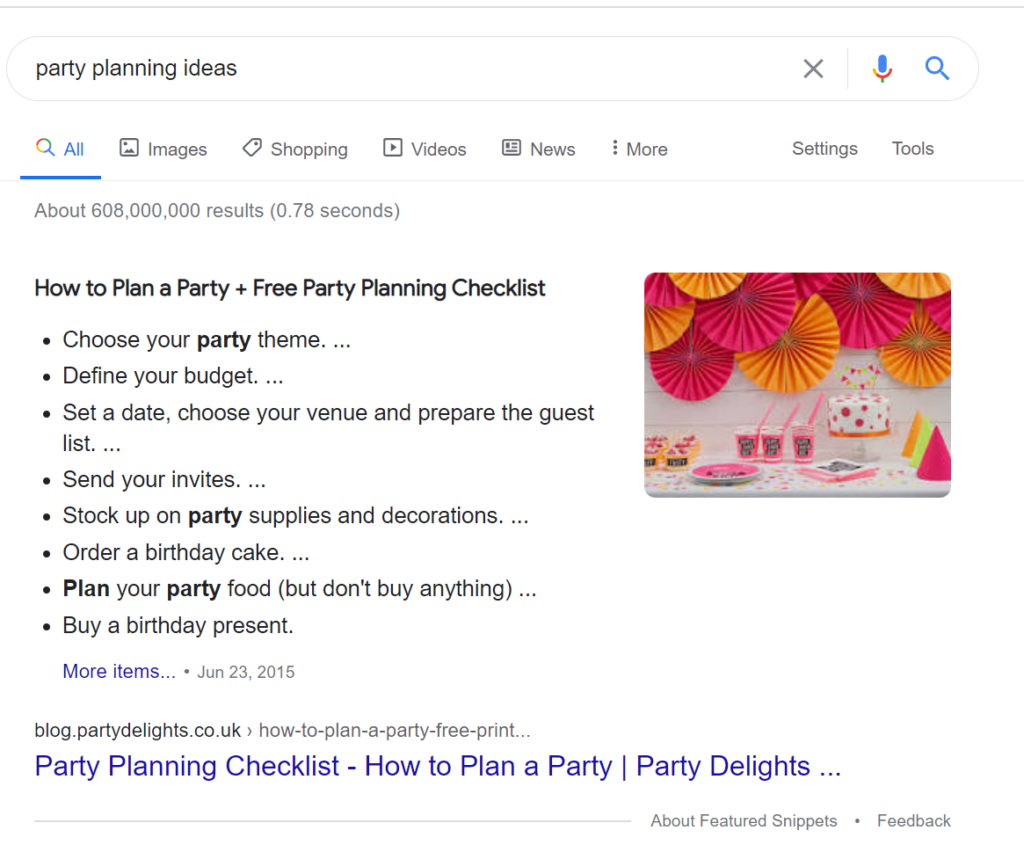This post was originally published in 2019 and has been updated for 2020 Algorithm Updates.
What is Position Zero?
Have a question? Just Google it. Does your website provide the best Google answer? If so, your website could appear in the Featured Answer Snippets, or Position Zero.
Firstly, your search result “position” is the ranking your website appears in when a keyword is searched in Google. You must be thinking that Number 1 is the best, but you might prefer to be in Position Zero.
Position Zero content appears before the search results at the top of the page. It is displayed a little differently than regular search results because it is designed to provide content or answers that respond to a specific search query. These featured snippets don’t appear for all search queries, but when they do, they may or may not link to the website that provided the content.
Is it worth the effort to try for Position Zero?
The answer is….it depends. Position zero is technically the top of the search results and this position can give a company some strong awareness advertising. However, the topic has also caused some controversy in the SEO industry.
The reason for this controversy? Some experts say that being in position zero might discourage users from actually clicking through to a business’ website (because they’ve already gotten the answer to their question on Google). And, in 2020, things have only become more complicated.
2020 Strikes Again…
As if 2020 wasn’t enough of a rollercoaster, Google’s January update may have tipped the scales further in the argument against position zero.
Previous to January, if a website achieved position #0, they would also be able to appear in the Search Results of Page 1. However, on January 23rd, Google announced an update with the goal of ‘decluttering’ of page 1 results: no longer would one single domain be able to dominate the top search results.
While this had a huge impact on SEO in general, nowhere was this more felt than by those in position #0. Google’s “decluttering’ update meant that being in that position now disqualified a website from appearing anywhere else on page 1. Immediately, websites in position 0# took a hit in their Click Through Rate.
Is 2020 The End of Position Zero?
Obviously being a digital agency (and having originally published this blog as a ‘promotion of position zero” in 2019), we had a mild freakout. But, once the dust settled something became very clear: position zero isn’t dead, it’s just different.
At the end of the day, position zero is still at the top of the search results page and will ultimately gain the most impressions. Translating those impressions to real business results is where the magic happens.
The January update means that websites need to be strategic about optimizing for Position #0/Featured Snippets.
Instead of ‘giving it all away’ in the featured snippet, websites can achieve both the high impressions of position 0 with the click through rate of position 1 by optimizing ‘teasers’ rather than complete answers. This means focusing on lists or any question that can’t be easily answered in a small paragraph. Having more information than the snippet can handle automatically adds a ‘More Items’ hyperlink to the end of your featured snippet and encourages searchers to click through.

In Pursuit of ‘Top 10 Ranking’
While position zero itself might be a mixed bag, the pursuit of the ‘top of page’ positions is still valid. So, how do you get Google to rank your site on the top of the search results?
Here is some quick takeaways:
- Every page on your site should have a title tag.
- Make title tags descriptive but concise. When someone looks at it, they should know exactly what will be on the page.
- Don’t overuse keywords or randomly stuff variations of keywords in the title—you might appear to be spam.
- Create distinct and descriptive titles for every page. The title should directly relate to the content on that page.
- Incorporate your brand in the title, but only where appropriate, such as the home page.
- Create good meta descriptions, and ensure every page has a different description. While they don’t appear on your web pages, Google uses them for search results.
- When aiming for Position 0: leverage schema markup on ‘Long Form Answers’ such as lists or subjects that can’t be answered in a short paragraph.
Of course, this list is just a basic guideline. It emphasizes how important it is to put in the time and effort to build strong web infrastructure to support your public-facing content.
It’s time to move your business to the top of the list. Ask us how we can help you implement schema markup, manage your Google My Business listing, and optimize your website to rank well in search results.